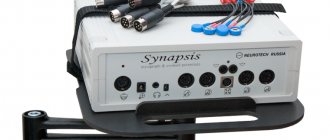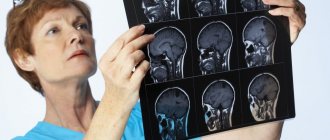1.General information
Neurodegeneration is a pathological process, with the development of which nervous tissue loses its complex organization, degenerates, gradually atrophies (decreases in volume and dies), becoming, in general, functionally untenable. Considering that the nervous system controls and regulates literally everything in the body, neurodegenerative diseases, even the slowest and most indolent ones, always constitute a serious problem, which is aggravated by the fact that at the moment all efforts to develop reparative (restorative) and etiopathogenetic ( eliminating the root cause of the disease) types of therapy have not brought tangible results.
For the most part, neurodegenerative diseases are caused by, or at least reliably associated with, hereditary, chromosomal factors. These diseases are traditionally considered rare, and in terms of tens and hundreds of thousands of people, many of them really seem to be sporadic, almost random anomalies. However, if we sum up the incidence of the fairly well-known diseases Alzheimer's, Pick's, Parkinson's, demyelinating multiple or amyotrophic lateral sclerosis, and DLB (dementia with Lewy bodies), the picture will look more alarming. Thus, with reference to data from post-mortem pathomorphological studies, it has been repeatedly emphasized in the literature that the same DLB (one of the frontotemporal variants of neurodegeneration) is diagnosed much less frequently than it actually occurs.
A large number of individual nosological units (i.e., officially established diagnoses of this group) are the subject of critical discussions, since degeneration of neural tissue is the main and common mechanism for the development of such diseases; for example, the extreme wing of supporters of generalization proposed “for convenience” to consider all diseases of this kind as only particular variants of Alzheimer’s or Parkinson’s diseases. This approach can hardly be considered justified: the clinical picture, rate of progression, prognosis, strategy of symptomatic treatment - all this is determined by a number of significant factors (primarily the predominant localization of the process) and differs sufficiently to speak of independent diseases.
The above fully applies to spinocerebellar ataxia. This is a hereditary neurodegenerative disease with its own distinct specificity, which can manifest at any age (usually in the range of 5-40 years) and is distinguished by a variety of forms: to date, over twenty relatively independent types have been identified and described (SCA, SCA 2, Friedreich's disease and many others). etc.).
A must read! Help with treatment and hospitalization!
Symptoms of Friedreich's ataxia
Friedreich's ataxia is a genetic disease characterized by damage to the nervous system with extraneural disturbances in the functioning of the heart, endocrine system and musculoskeletal system. The pathology begins at a young age with neurological manifestations. The main diagnostic methods are MRI (magnetic resonance imaging) and neurophysiological testing. Additional examinations may be prescribed - hormonal studies, blood sugar tests, biochemistry, x-rays of the spine, ultrasound of the heart. You will also need to consult a cardiologist, ophthalmologist and endocrinologist.
Symptoms of Friedreich's ataxia: uncertainty and unsteadiness when walking, impaired hand coordination, tremors, changes in handwriting, weakness in the legs, speech impairment, hearing loss.
2. Reasons
Spinocerebellar ataxia is based on an inherited mutation of certain genes (the type of inheritance, as a rule, is such that if both parents are carriers, then the probability of the pathology “triggering” in the child is 1/4 or 25%). As a result, a number of complex electrochemical processes that control energy and protein balance are disrupted (the defective structure of the frataxin protein plays a significant role), the transmission of nerve impulses from the center to the periphery and back, etc. The unifying feature for the entire group of ataxias is that in neural degeneration structures of both the brain (primarily the cerebellum) and the spinal cord are involved, as well as the pathways between them, peripheral nerves and, in some cases, myocardial tissue. The term “ataxia” literally means “lack of order, coherence,” and, by definition, the main manifestation of spinocerebellar ataxia is progressive impairment of motor coordination and, in general, neuromuscular coherence.
Visit our Neurology page
Causes of the disease
The causes of ataxia are very diverse - from the toxic effects of certain pharmaceuticals to inflammatory diseases and tumor processes.
Main reasons:
- brain diseases (acute cerebrovascular accident, traumatic brain injury, demyelinating diseases, hydrocephalus, cerebellar and brain tumors);
- diseases of the vestibular apparatus (neurinoma of the vestibular nerve, labyrinth, vestibular neuronitis);
- hereditary diseases;
- lack of vitamin B12 in the body;
- poisoning with potent drugs, sleeping pills.
3. Symptoms, diagnosis
The probable symptoms of spinocerebellar neuronal degeneration are so polymorphic that it is impossible to describe at least the main of its twenty types in one article. There are disorders of visual-motor coordination and muscle tone (tremor, extrapyramidal “stiffness”); partial paralysis of the extraocular muscles and degenerative retinopathy in combination with optic nerve atrophy; general atrophy of muscle fibers; various neurological symptom complexes. If the neurodegenerative process affects the cerebral cortex, dementia gradually develops - a debilitating decline in cognitive functions (memory, attention, various types of recognition, etc.), logical thinking, and speech organization. In case of damage to the medulla oblongata, “bulbar” symptoms develop: degradation of swallowing, palatal, chewing, and respiratory reflexes.
Diseases in this group progress relatively slowly: the course can take up to 20 years or more, although much faster developments have also been described. Patients gradually lose the ability for self-care and, in general, for productive contact with the world; they increasingly depend on the care and support of others, falling into complete helplessness towards the terminal stage and dying, as a rule, from pneumonia, exhaustion, respiratory failure, etc.
Neurodegenerative diseases, including ataxia, are diagnosed clinically, during a neurological examination and a thorough analysis of complaints and anamnestic information. Additionally, tomographic imaging methods, neuropsychological examination, etc. may be prescribed, but the final diagnosis is established and differentiated, as a rule, only pathomorphologically.
About our clinic Chistye Prudy metro station Medintercom page!
Spinocerebellar ataxia
Autosomal dominant cerebellar ataxias. Currently, more than twenty forms of this disease are known. The clinical picture is mainly determined by damage to the cerebellum; sometimes the basal ganglia, brain stem, spinal cord, optic nerves, retina and spinal nerves are also affected. The disease can manifest itself only as cerebellar disorders or their combination with symptoms of damage to the listed structures. Dementia rarely develops. The first symptoms of the disease are unnoticed awkwardness and instability when walking and running quickly. After a few years, the patient gradually develops a full-blown ataxic syndrome, there is clumsiness and lack of coordination in the hands, intention tremor of the limbs, adiadochokinesis (irrhythmicity, slowness of movements), chanting speech, handwriting is characteristically impaired (macrography, uneven lines). Characteristic symptoms include pyramidal and extrapyramidal tract involvement, ophthalmoplegia (paralysis of the eye muscles), optic nerve atrophy, retinal pigmentary degeneration, nystagmus (involuntary rhythmic convulsive movements of the eyeball), amyotrophy. The molecular genetic cause of diseases is an increase in the number of trinucleotide CAG repeats in the coding gene. The number of repetitions is inversely proportional to the age of manifestation, and directly proportional to the rate of development and severity of the disease. of anticipation is characteristic - the severity of the clinical manifestations of the disease from generation to generation within the same pedigree (earlier onset and rapid progression of the disease, the manifestation of more severe symptoms in descendants). The anticipation phenomenon is caused by the instability of the repeat and an increase in its length during the transmission of the mutant gene from the parent to the offspring. The effect of “paternal transmission” (the manifestation of earlier and more severe cases of the disease in the descendants of a sick father) is due to the preferential lengthening of the mutant repeat in male gametogenesis, whereas when the gene is transmitted from the mother, the repeat region usually remains stable.
The Center for Molecular Genetics carries out direct molecular genetic diagnosis of the most common forms of spinocerebellar ataxia: SCA 1, 2, 3 , 6, 7, 8, 12 and 17 types, which is based on an assessment of the number of CAG repeats localized in the ATXN1, ATXN2, ATXN3, CACNA1A, ATXN7 , ATXN8, PPP2 R2 B and TBP .
Spinocerebellar ataxia 1 (SCA 1, OMIM 164400).
The disease usually begins between the ages of 30 and 40 years (possible range is from 4 to 74 years). The main clinical symptoms are ataxia, ophthalmoplegia, pyramidal and extrapyramidal disorders. The molecular genetic cause of SCA1 is an increase in the number of trinucleotide CAG repeats in the ATXN1 gene , located on chromosome 6 (segment 6p23). The length of the gene is 450,000 nucleotides. The gene contains nine exons. The transcript consists of 10660 nucleotides. The gene contains a region of CAG trinucleotide repeats (normally there are less than 36 of them; in disease there are more than 40). Normal alleles of the gene usually contain insertions of one to three CAT triplets within the trinucleotide region, which are absent in the mutant gene. Their presence is considered as an important factor in the stabilization of normal alleles during meiosis.
Spinocerebellar ataxia 2 (SCA 2, OMIM 183090).
The disease usually begins between the ages of 20 and 40 years (possible range is from 6 to 67 years). The main clinical symptoms are ataxia, slowing down of saccadic movements of the eyeballs (saccades are spasmodic fast friendly fixing eye movements that occur when the gaze is transferred from one stationary object to another), pyramidal and extrapyramidal disorders. The molecular genetic cause of SCA2 is an increase in the number of trinucleotide CAG repeats in the ATXN2 gene , located on chromosome 12 (segment 12q24). The gene contains 25 exons. The length of the gene is 130,000 nucleotides. The gene contains a region of CAG trinucleotide repeats (normally there are 14-31 of them; in the disease, 35-64). Normal alleles of the gene usually contain within the trinucleotide region individual insertions of CAA triplets that stabilize the repeat.
Spinocerebellar ataxia 3 (SCA3, Machado-Joseph disease, OMIM 109150)
The disease usually begins after 25-30 years (possible range - from 5 to 70 years). The main clinical symptoms are ataxia (first of all, abasia (gait disturbance) is observed), ophthalmoplegia, paresis of upward gaze, fasciculations of the facial muscles and fasciculations of the tongue muscles, the phenomenon of “bulging eyes” (widely opened palpebral fissures with fixed eyeballs), pyramidal and extrapyramidal symptoms (parkinsonism). The molecular genetic cause of SCA3 is an increase in the number of trinucleotide CAG repeats in the ATXN3 gene, located on chromosome 14 (segment 14q24.3-q31). The gene contains 11 exons. The length of the gene is 48,200 nucleotides. The gene contains a region of CAG trinucleotide repeats (normally there are 12-47 of them; in disease, 53-86)
Spinocerebellar ataxia 6 ( SCA6 , OMIM 183086)
Spinocerebellar ataxia type 6 is an autosomal dominant disorder with an incidence of 3:100,000. The first sign is a gait disorder, which ultimately confines the patient to a wheelchair. SCA6 usually begins later in life compared to types 1-3. The main clinical symptoms are mild progressive ataxia, nystagmus when fixating gaze, dysarthria, dysphagia. MRI reveals isolated cerebellar atrophy. The molecular genetic cause of SCA6 is a small expansion of trinucleotide CAG repeats located in the 3' coding region of the CACNA1A , located on chromosome 19 (segment 19p13). Normally, the number of repeats is from 5 to 20, in disease it is found from 21 to 25. The CACNA1A gene encodes the CACNA1A pore-forming subunit of the calcium channel, expressed mainly in the cerebellum (in granular cells and Purkinje cells). Mutations in this gene lead to the development of two other diseases - episodic ataxia type 2 and familial hemiplegic migraine.
Spinocerebellar ataxia 7 (SCA7, OMIM 164500)
Spinocerebellar ataxia type 7 (olivopontocerebellar atrophy type 3) is a progressive autosomal dominant neurodegenerative disease clinically characterized by cerebellar ataxia associated with macular degeneration. The average age of manifestation of the disease is 32 years. The severity, rate of progression, and age of onset vary both between and within families. The main clinical symptoms are ophthalmoplegia, pyramidal and extrapyramidal signs, dysarthria, dysphagia, chorea, hyperreflexia, spasticity, loss of deep sensitivity, retinal pigmentary degeneration, progressive loss of vision, slow saccades, optic nerve atrophy.
The molecular genetic cause of SCA7 is the expansion of trinucleotide CAG repeats of the ATXN7 (3p21.1-p12), located in the polyglutamine tract of the ataxin-7 protein. Normally, the number of repeats varies from 4 to 35; in disease, from 36 to 306 repeats are found.
Spinocerebellar ataxia 8 (SCA8, OMIM 608768)
Spinocerebellar ataxia type 8 is a slowly progressive autosomal dominant disorder, the age of onset of which varies from 18 to 65 years. The main clinical symptoms are progressive cerebellar ataxia, impaired coordination of gait, limb movements, speech, bradykinesia (slow movements). Patients often experience dysarthria, tremor, dysphagia, nystagmus, slowing of saccadic movements of the eyeballs, dysmetric saccades, and loss of sensitivity. MRI reveals atrophy of the hemispheres and the cerebellar vermis . The molecular genetic cause of SCA8 is an increase in the number of trinucleotide CAG repeats in the ATXN8 . Normally, the number of repeats varies from 15 to 50; in disease, from 71 to 1300 are detected.
When conducting prenatal (antenatal) DNA diagnostics in relation to a specific disease, it makes sense to diagnose common aneuploidies (Down, Edwards, Shereshevsky-Turner syndromes, etc.) using existing fetal material, paragraph 54.1. The relevance of this study is due to the high total frequency of aneuploidy - about 1 in 300 newborns, and the absence of the need for repeated sampling of fetal material.
Spinocerebellar ataxia 12 ( SCA12, OMIM 604326)
Spinocerebellar ataxia type 12 is an autosomal dominant disorder. Begins between the ages of 8 and 55 years. The main clinical symptoms are tremor of the upper extremities, head tremor, ataxia, dysmetria, dysdiadochokinesis, hyperreflexia, lack of movement, abnormal eye movements, dementia. MRI and CT scans reveal atrophy of the cerebral cortex and cerebellum.
The molecular genetic cause of SCA12 is an increase in the number of trinucleotide CAG repeats in the PPP2 R2 B , located on chromosome 5 (segment q31-q33). Normally, the number of repeats is from 7 to 32; in disease, 51 to 78 are found. The clinical significance of repeat expansion in the range from 33 to 50 has not yet been established. The PPP2R2B gene encodes the regulatory subunit B of the phosphatase 2 protein, which is involved in regulatory processes such as cell growth and division, muscle contraction, and gene transcription.
Spinocerebellar ataxia 17 (SCA 17, OMIM: 607136)
Spinocerebellar ataxia type 17 is an autosomal dominant neurological disorder characterized by ataxia, pyramidal and extrapyramidal disorders (parkinsonism), cognitive impairment, psychosis and seizures. Clinical manifestations are similar to Huntington's Chorea. The disease usually begins between the ages of 23 and 29 years (possible range is from 3 to 53 years).
The molecular genetic cause of SCA17 is an increase in the number of trinucleotide CAG (or CAA) repeats in the TBP , located on the long arm of chromosome 6 (segment q27). The TBP gene encodes a transcription factor TATA box binding protein (TBP). Normally, the number of repeats varies from 25 to 44; in disease, from 47 to 63 repeats are detected. The association of 45 and 46 repeats with incomplete penetrance of the disease has been described.
Spinocerebellar ataxia
4.Treatment
There is currently no treatment that reverses or even stops neurodegeneration. All types of therapy practiced today are purely palliative in nature and are aimed at mitigating the most maladaptive symptoms that reduce the quality of life and dominate in a specific clinical picture. As a rule, medications are prescribed to improve neurotrophism (nutrition of nerve tissue), vitamin complexes, massage, and physical therapy to correct and/or compensate for movement disorders.
Interpretation
In subjects with a number of CAG repeats ≤ 44, the diagnosis of SCA3 is excluded; the risk of developing the disease in offspring is extremely low. Clinical cases of SCA3 development in the presence of 45 have been described; 51; 53-56 CAG repeats. Despite this, it is believed that an increase in the number of CAG repeats within the range of 45-59 triplets does not cause the classic clinical picture of SCA3, and alleles of this size are considered to be intermediate. If the number of CAG repeats is ≥60 in the subject, the diagnosis of SCA3 is confirmed. SCA3 is characterized by a tendency to increase the number of CAG repeats in the ATXN3 gene in subsequent generations, which is manifested by a more severe form and early manifestation of the disease. There is a direct relationship between the number of CAG repeats in the early-onset ATXN3 gene, the rate of progression and the severity of SCA3.
Diagnosis of the disease
After a thorough examination and medical history, the doctor will definitely prescribe additional examinations.
Diagnosis for limb ataxia includes:
- electroencephalography (EEG);
- magnetic resonance imaging (MRI) of the head and spinal cord;
- computed tomography (CT);
- magnetic resonance angiography (MRA);
- laboratory blood test, toxicological analysis;
- DNA test if Louis Bar syndrome (ataxia telangiectasia) is suspected;
- neurological examination;
- consultation with a cardiologist, otolaryngologist, neurosurgeon.
Treatment of ataxia
The main treatment is aimed at eliminating the cause of the disease. The course consists of angioprotectors, nootropics, antibiotics (if necessary), hormones and B vitamins. An excellent addition would be gymnastics and exercise therapy for ataxia syndrome.
With timely and qualified treatment, the prognosis of the acquired disease is favorable, which cannot be said about hereditary ataxias.
Related services: Computed tomography Magnetic resonance imaging









